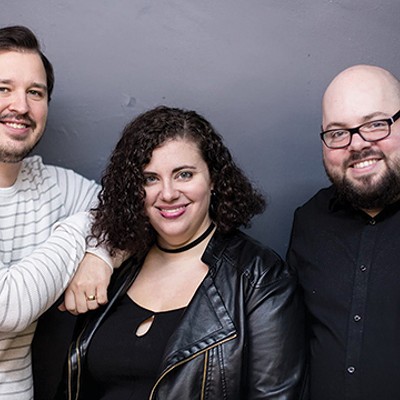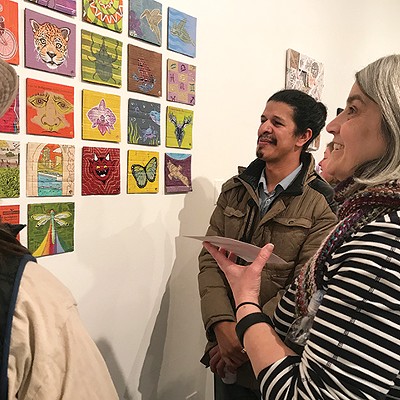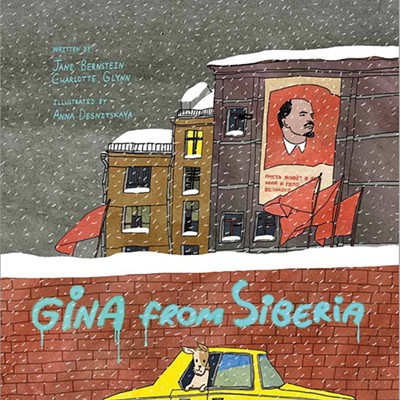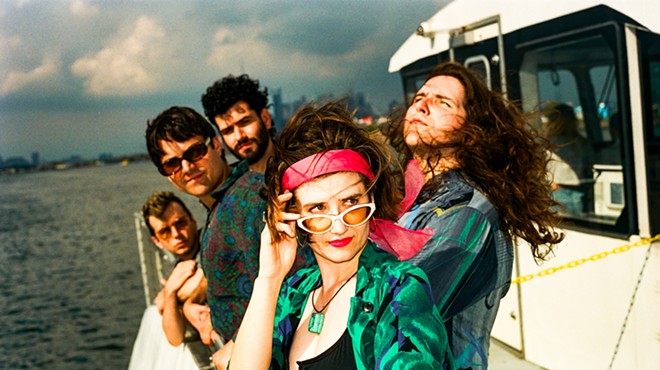Leonardo Bravo and Luis Loja are different from most banana farmers in Ecuador. In contrast to workers on big plantations, many of whom are paid little and are exposed to dangerous pesticides, Bravo and Loja work in a small farmer cooperative that works in tandem with the fair-trade movement to ensure they receive fair prices for their goods.
Fair trade is an international movement that directly supports improvements for farmers in developing countries. Through environmental sustainability work, fair pricing and direct trade, many small farmers such as Bravo and Loja are able to grow products such as bananas, coffee or tea, and compete in the global marketplace under better working conditions than they might otherwise experience.
But after more than a decade of activism in the United States, the fair-trade movement is experiencing growing pains. This was perhaps most evident at a recent United Students for Fair Trade (USFT) Conference in Boston, which Bravo and Loja both attended. Fair-trade farmers such as Bravo and Loja have been largely absent from previous gatherings, but they are starting to demand a place at the table.
"We came here to be a presence and a representation of the voice of small-scale farmers," says Loja.
As fair-trade farmers' voices grow stronger, so do those of mission-based organizations like that of Jonathon Rosenthal, managing director of Oké USA, a company that imports and sells fair-trade bananas in the United States. Managing the movement's growth while ensuring that it maintains its core principles has proven difficult in recent years, says Rosenthal.
The fair-trade movement has grown exponentially, thanks to popularization and participation by Starbucks, Wal-Mart and other corporate giants, which have filtered millions of dollars into fair-trade certified products.
"There's competing models of what we're about," Rosenthal says. "One of the dangers is that the fair-trade movement could splinter, [with] smaller more idealistic companies splitting off [and] doing something different."
For better or for worse, the fair-trade movement has reached a crossroads.
"It's similar to the organics movement," says Rosenthal. Initially, organic farming "was about community-based agriculture. Now it's about certified products and larger corporations, so [fair-trade] pioneers are asking, 'How do we reclaim our movement?'
"Organics is gone, so there's a danger that fair trade could head in that direction."
Enormous growth
The roots of the U.S. fair-trade movement can be traced back to World War II, when religious organizations developed relationships with war refugees and sold their handmade crafts. Decades later, in 1986, Equal Exchange, the nation's first fair-trade company, was founded. Equal Exchange adopted a set of guiding principles, which encouraged social and economic improvements for farmers who otherwise earned a pittance in developing countries. As its first product for the U.S. market, Equal Exchange picked fair-trade Nicaraguan coffee in light of the unrest in Nicaragua during the 1980s.
In those early years, long before "fair trade" was a buzzword uttered by top executives at Starbucks and Dunkin' Donuts, Equal Exchange struggled to sell the concept.
According to Rodney North, spokesperson for Equal Exchange, food co-ops across the country were the first to embrace fair trade.
"They're like the midwives to the fair-trade movement -- it was the food co-ops that embraced [fair trade] when it came out in the 1980s," he says. "After that, other retailers and companies got involved."
Equal Exchange lucked out during the 1990s, when the specialty coffee boom took off in the United States. More individual coffee brewers adopted the fair-trade model and in 1998, TransFair USA, an affiliate of the Fairtrade Labeling Organization (FLO), entered the scene. TransFair USA acts as a certifier of fair-trade products, ensuring that crops are grown with environmentally sustainable practices, and that growers enjoy "fair prices for farmers, and decent working and living conditions for workers."
Over the past nine years, fair-trade certified products have exploded into the U.S. marketplace. According to TransFair USA, the estimated retail value of fair-trade coffee alone jumped from $50 million in 2000 to $750 million in 2006.
The fair-trade market has grown to embrace other commodities such as tea, cocoa-based products, rice, sugar, vanilla and fresh tropical fruits. And it's only going to get bigger, says Nicole Chettero, spokesperson for TransFair USA.
"Already in the last two years you see Signature brand Costco fair-trade certified coffee; all espresso at Dunkin' Donuts is fair-trade certified; and it's starting to show up at Sam's Club," she says. "It's going to keep growing within the cooperative grocery store and keep developing, but it's also going to bleed into the mainstream."
The expansion is win-win for everyone, Chettero maintains. Fair-trade certified products set a price floor for impoverished farmers; encourage small, democratic farmer cooperatives; and offer farmers financing that can be used to invest and grow their businesses. As large manufacturers like Starbucks and Sam's Club adopt the fair-trade label, millions of Americans are introduced to fair-trade products. Two years ago, most consumers probably didn't even know what the term meant.
And the beauty of fair-trade product certification, says Chettero, is that standards are controlled by one entity -- TransFair USA. This stands in contrast to the organics movement, where there is no single organization charged with certifying products, and no single standard to determine what "organic" really means. The result has been numerous labels and claims by producers, and consumer confusion.
But thanks to TransFair, says Chettero, products are always judged according to "the same environmental standards, the same price floors, the same demand for democratic transparency."
"More and more Americans are not only asking themselves as they walk down the grocery aisle, 'Is this good for me' -- they're also asking, 'Is this good for others and the environment?'" she says. "We find that we can vote and protest and do all sorts of things, but where we spend our money is one of the most powerful decisions we can make."
All fair-trade certified products should have the black and white TransFair logo -- or "bucket boy," as TransFair folks lovingly call it. For handicrafts and textiles, which are not products within TransFair's domain, consumers should look for the seller's membership to the Fair Trade Federation (FTF), a membership-based organization that is founded on peer- and self-verification, says Chettero.
In the coming years, Chettero says TransFair is considering adding flowers, garments and wine to its fair-trade product portfolio. Just like the organics movement exploded five years ago, Chettero sees fair trade following in its footsteps.
But with growth comes new challenges.
Growing pains
Consumer education is perhaps the biggest obstacle that TransFair USA needs to tackle, says Chettero.
Some companies make claims about paying "fair-trade prices" or having "sweatshop-free labor," terms that sound good, but come with little guarantee.
As consumers, it's important to ask questions about what the labels really mean, says Trina Tocco, campaigns coordinator at International Labor Rights Fund (ILRF), a nonprofit that educates the public about international labor-rights issues.
"I've gone to my local coffee shop and they have 'fair trade' all over the coffee beans they're selling, but it won't have the TransFair certification," Tocco says. "When I get into a back and forth, I ask, 'How do you know?' -- and they say, 'Well, they told us it was.' It's easy if you ask one or two basic questions. The store should be able to prove it," she says. "If there's any ambiguity, then you as a consumer should do further research."
TransFair and the Fair Trade Federation have Web sites that list members and guidelines that their organizations follow. (The TransFair site, www.transfairusa.org, also includes a directory to stores carrying fair-trade goods. Among the Pittsburgh locations are the East End Food Co-Op, Squirrel Hill's Ten Thousand Villages gift shop, Nature's Basket locations, and a handful of local cafes.)
"It's by consumers asking questions that companies and retailers realize that the demand exists, and that will continue to allow for products to be available," says Tocco. "Ask questions, and hopefully you'll get answers. If you don't get answers, then it also tells you something."
North, of Equal Exchange, says consumers need to grasp the distinction between companies that happen to carry some fair-trade products, and those that live, breathe and work by the fair-trade principles.
"One of the growing pains has been as large corporations get involved like Wal-Mart, Starbucks or Nestle," North explains. "There's concern that they will want the marketing advantage of using the fair-trade seal, but they won't really support the goals of fair trade."
Big corporate involvement in the fair-trade movement is a double-edged sword for mission-based companies like Equal Exchange. On the one hand, corporate giants have purchasing power that dwarfs most companies. If Starbucks purchases a small percentage of their coffee as fair-trade certified, they lift the rest of the market along with them. Still, "You want them to get on board at a high-bar level, and not at a low-bar level," says North. "Unfortunately, we've seen the tokenism."
For example, when a customer buys a latte at Starbucks, that customer won't receive fair-trade certified coffee unless he or she specifically asks for it. That means that most of the coffee flowing out of Starbucks is not fair-trade certified.
For ILRF's Tocco, the fair-trade movement is headed in the same direction as the organics movement.
"It's the exact thing that happened in the organics movement," she says. "As more and more entities came into the mix, it watered down the actual standards and the integrity of the term and the label itself."
The more watering down there is, the more consumer confusion results, she explains.
"We have to get into the nuances with customers about what all these labels mean and how is one better or worse than the other," Tocco says.
The coffee buzz
In no industry is the fair-trade debate more pronounced than in coffee. Currently, fair-trade coffee is the fastest-growing segment of the specialty-coffee industry, which in turn is the fastest-growing segment of the coffee industry overall.
But with large companies carrying fair-trade certified coffee, smaller roasters have started to question how the fair-trade movement can maintain its core principles. Some roasters, like Matt Earley, cofounder of Just Coffee in Madison, Wis., have decided to part ways with TransFair.
Once a carrier of the TransFair USA logo, Just Coffee stopped paying dues to TransFair several years ago.
TransFair and similar organizations in other countries "have taken their eye off the ball on some of the broader goals and [focused] solely on growth," Earley says. "[T]hey have sold the label too cheap to transnational companies who are part of the problem -- and aren't interested in being part of a solution."
Just Coffee belongs to Cooperative Coffees, a co-op owned by about 20 small roasters with direct, fair-trade relationships with coffee-bean farmers. Such connections have become lost as fair-trade coffee has become big business, co-op members say.
"As soon as the buyer and the seller do not know each other, a completely different relationship exists," says Bill Harris, president of Cooperative Coffees. "Traditional fair-trade relationships required a personal relationship. Without this, the buyer puts price or supply pressure on the middle person, who often must transfer this pressure to the seller."
And while exposing fair-trade products to Middle America is a good thing, says Harris, he wonders whether "the standards for fair-trade claims have been followed and are clearly communicated at all levels," he says. "Traditionally, fair trade meant disadvantaged farmers, long-term relationships ... fair price, direct relationship at a minimum. Are all these tenets represented in the Sam's Club product?"
Not all the roasters in Cooperative Coffees have renounced the TransFair label: Some roasters still pay to use it. (The fee is necessary to pay for the cost of certifying that the coffee is a genuine fair-trade product.) Others, like Just Coffee, sell their products without it.
But critics say TransFair could be doing more. The agency requires a "minimum floor price" that must be paid for coffee to be fair-trade certified. But that floor price, set in 1989, hasn't been adjusted since the 1990s. Meanwhile, Cooperative Coffees now offers about 20 cents more per pound than the TransFair minimum.
"We raised the minimum last year, and we're hoping to raise it this year," Harris says. (According to Chettero, an increase in TransFair's certified price is in the works. "It's moving forward," she says. "There are wheels in place, and a price increase is very likely, but when is not clear.")
There is also growing concern from roasters and the fair-trade community about TransFair's certification process. According to some roasters, the organization could be doing more to regulate the industry.
TransFair USA performs a double-blind audit, checking both the farmer's and the manufacturer's books to ensure that fair-trade farmers are getting paid the right price -- and that no one is skimming profits before they reach disadvantaged farmers. However, Earley and others question how often those audits are performed for large multinational companies.
Many of those critics laud the approach of TransFair Canada, which plans to spin off its auditing and certification arm to a separate third-party group. This is important, says TransFair Canada Executive Director Rob Clarke, because there's a conflict of interest when the same organization markets products and certifies them.
"If ... I've been working on trying to get a major grocer to come on board," says Clarke, and "the grocer says, 'I don't want to do the audit once a year, I want to do it once every three years.' ... I could turn around and say to my certification guy, 'You're only going to audit them once every three years.'"
TransFair USA doesn't see a need for a third-party audit system, says Chettero. Most information about businesses' fair-trade practices is available on www.transfairusa.org. Any additional information can be requested, she says.
TransFair USA has its marketing and auditing arms under one roof, she acknowledges, but that's where the similarities stop.
"We are separate departments. Our core charge is to make sure that our auditing is as stringent as possible -- that's the bedrock of what we do."
Encouraging big corporations to establish long-term relationships with farmers will take some time, she says, but the learning curve will be worth it. Conversely, if companies leave the TransFair label, she warns, it will complicate how the U.S. fair-trade market can track products and project growth.
"I would argue that in trying to get more mainstream importers and roasters, we're trying to introduce the concept of a long-term trade relationship," she says. "If we can introduce that at the mainstream level, that's a good thing."
Shaping the movement
For Earley, who recently returned from the USFT conference in Boston, it's becoming more and more clear where the fair-trade movement needs to go.
For years, TransFair USA, and its affiliate FLO, filled a vacuum during record growth in the industry, providing a reliable standard in an emerging market.
"We in the fair-trade movement basically allowed them to do that, trusting that they would make the best decisions for the movement," he says. "A lot of us are now realizing it wasn't the best decision to make -- it was sort of made by default."
Earley says that in the coming years, grassroots organizations in the movement will become increasingly important.
"Much like producer groups, we need to organize groups, realizing what our power is in the movement."
In addition to more transparent auditing, Earley and others want to see TransFair USA incorporate voices from fair-trade farmers and representatives from grassroots organizations.
"TransFair USA is run like corporation," he says. "It has a CEO, [and] it has a board appointed by the CEO. It has no democratic accountability."
TransFair USA is open to incorporating more diverse voices on its board, says Chettero. And in order to prevent the growing schisms in the movement, Joe Kurnow, national coordinator for USFT, says there needs to be "deep listening" in the coming years.
"Whether that's listening to producer cooperatives or listening to the grassroots," says Kurnow, "I think if there's not a real commitment to communication and being responsible, then the labels may lose legitimacy with their core supporters."
In fact, all parties in the fair-trade movement are finding themselves discussing uncomfortable topics.
What does it mean for a movement based on democratic principles and equality to exclude farmers from its board of directors? How can the mainstream free-trade movement explain maintaining the same price on coffee for more than a decade? How loudly do farmers like Bravo and Loja have to talk before the rest of the movement will listen?
Making mistakes in fair trade is one thing, says Earley. What will be crucial in the coming years is learning from them.
"TransFair is a little bit behind the eight ball, but we see good people who are going to recognize that this isn't an 'if,' but a 'when' and a 'how,'" says Earley. "We all have to take responsibility for what's going on -- we have responsibility as stakeholders to shape this movement."
A version of this article first appeared in the Boulder Weekly.


















